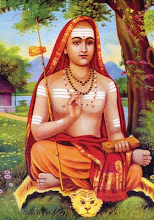In Devi Bhagavatam Veda Vyas proposed that 'PasuDharmo Namae Preethihi' meaning animals are with in their right to do what they feel like. In basic needs of sleep, hunger, copulation, animals do not need to follow any rules and can do as per its wish. Its sad that in today's world even human's follow the same rule and proudly announce it.
Given that I have made this statement, the question that I will need to answer now is - so how do we know what's the right behaviour for humans. The word 'Dharma' is what we as humans must follow but Dharma is so complex that how do we know what to refer when in confusion. There are few guidelines laid out to answer this question
1. Shruti or Veda:
Veda is said to be ultimate proponent of Dharma and is said to be breathe of Lord himself. Seer Gautama said ' Vedoshila Dharmam' - Veda is ultimate reference to Dharma. For any query related to Dharma, Veda will be first authetic source of reference. How ever, Veda is not easy to understand and is not easy to access
2. Smriti
Smritis are written by Seers who have strong hold on Vedas to guide law enforcement personnel as well as common people on what Dharma is.
krute tu mAnavA dharma: tretAyAm gautamA: smrutAh !
dvApare SAnkha likhitAh kalau pArASarAh smrutAh !!
There are many smritis but Manu Smriti (for Kruta Yuga), Gautama Smriti (Treta Yuga), Sankha and Likhita smrutis (Dwapara Yuga) and Parashara Smriti (Kali Yuga) are few popular ones. Each of the above Smritis are written keeping in view the times prevalent and for respective yuga. If Smriti contradicts with Veda in any of its doctrines, then Veda is to be followed.
3. Puranas
While Smriti is a good reference for understanding Dharma, it is full of doctrines that might be difficult to interpret given complex nature of Dharma Sukshma. So Puranas give illustrated instances of execution of Dharma thus making it simpler to understand and emulate.
4. Sista Achara
In Gita Lord Krishna said world will follow what wise men do. Acharas have been established so that through execution of them as part of daily routine people can unconsciously follow Dharma. This is to ensure people who either do not have access to wisdom of Shruti/Smriti/Purana or who may find it difficult to refer to them at all times, can follow Dharma through enforcement of Acharas.
5. Self Decision
Self Decision is surely allowed in absence of any guidance from above four proponents of Dharma. How ever this should not be first recourse in any circumstance where we can have adequate guidance from above four. If we make this first recourse, then we will be downgraded to level of animal, which is free to execute action per its will.
Given that I have made this statement, the question that I will need to answer now is - so how do we know what's the right behaviour for humans. The word 'Dharma' is what we as humans must follow but Dharma is so complex that how do we know what to refer when in confusion. There are few guidelines laid out to answer this question
1. Shruti or Veda:
Veda is said to be ultimate proponent of Dharma and is said to be breathe of Lord himself. Seer Gautama said ' Vedoshila Dharmam' - Veda is ultimate reference to Dharma. For any query related to Dharma, Veda will be first authetic source of reference. How ever, Veda is not easy to understand and is not easy to access
2. Smriti
Smritis are written by Seers who have strong hold on Vedas to guide law enforcement personnel as well as common people on what Dharma is.
krute tu mAnavA dharma: tretAyAm gautamA: smrutAh !
dvApare SAnkha likhitAh kalau pArASarAh smrutAh !!
There are many smritis but Manu Smriti (for Kruta Yuga), Gautama Smriti (Treta Yuga), Sankha and Likhita smrutis (Dwapara Yuga) and Parashara Smriti (Kali Yuga) are few popular ones. Each of the above Smritis are written keeping in view the times prevalent and for respective yuga. If Smriti contradicts with Veda in any of its doctrines, then Veda is to be followed.
3. Puranas
While Smriti is a good reference for understanding Dharma, it is full of doctrines that might be difficult to interpret given complex nature of Dharma Sukshma. So Puranas give illustrated instances of execution of Dharma thus making it simpler to understand and emulate.
4. Sista Achara
In Gita Lord Krishna said world will follow what wise men do. Acharas have been established so that through execution of them as part of daily routine people can unconsciously follow Dharma. This is to ensure people who either do not have access to wisdom of Shruti/Smriti/Purana or who may find it difficult to refer to them at all times, can follow Dharma through enforcement of Acharas.
5. Self Decision
Self Decision is surely allowed in absence of any guidance from above four proponents of Dharma. How ever this should not be first recourse in any circumstance where we can have adequate guidance from above four. If we make this first recourse, then we will be downgraded to level of animal, which is free to execute action per its will.
